


On a very cold March morning, House Speaker Joe Aresimowicz stopped outside the Legislative Office Building to chat with a man wearing a No Tolls CT sign on his jacket.
It was the day of a public hearing before the state’s Transportation Committee on several bills backed by House and Senate Democrats to install electronic tolls on Connecticut’s highways – an effort Aresimowicz has personally advocated for and put much his political clout into over the past two years.
It was a friendly visit. They didn’t talk tolls. Aresimowicz, smiling with his hands in his pockets, appeared humble and deferential. They eventually said their goodbyes and Aresimowicz walked through the revolving doors into the LOB to face the press, as well as opponents and supporters of one of the most contentious issues on the Connecticut Democratic Party’s agenda.

Joe Aresimowicz, D-Berlin, speaking on the House floor.
House Speaker Aresimowicz is one of the most powerful politicians in the state of Connecticut. Elected first as House Majority Leader in 2013 and then as Speaker of the House in 2017, he has presided over turbulent times in a state that has run out of money, time and political capital – and a population that has largely run out of patience.
Despite some fierce fights in the legislature, Aresimowicz remains highly popular and well-liked by fellow lawmakers on both sides of the aisle. He served in the Army Reserves as a medic and is the head football coach at Berlin High School.
But it is Aresimowicz’s full-time day job that has caused the most controversy and consternation among opposing politicians and parts of the public.
One of the most powerful people in Connecticut politics also works for one of the most powerful influences in Connecticut politics – the American Federation of State, County and Municipal Employees Council 4, a public sector union with over 30,000 members which holds contracts with the State of Connecticut and municipal governments across Connecticut.
AFSCME is a part of the Connecticut AFL-CIO, a conglomerate of many different public and private sector unions which claims over 200,000 members in the state and can exert tremendous influence at the Capitol.
The two unions are tightly bound: the former head of AFSCME Council 4, Sal Luciano, was recently elected president of CT AFL-CIO, taking the place of long-time president and fixture at the Capitol, Lori Pelletier.
Aresimowicz works as AFSCME Council 4’s education coordinator and, according to the union’s 2018 federal filing, earned a salary of $107,354 plus an additional $6,621 in allowances.
Upon his election to House Speaker, some lawmakers cried foul, saying his employment with the union constituted a conflict of interest.
The State Board of Ethics disagreed, noting the Speaker doesn’t negotiate directly with the union (under Connecticut law, that is the governor’s job) and that he had no say in how the union chose to pay individual employees, so he couldn’t directly benefit.
The decision by the Office of State Ethics, however, had to do with money – who could individually benefit from the Speaker’s position – but it said nothing about the protection afforded the union by Aresimowicz’s position as Speaker of the House.
During the summer of 2017, a video surfaced of Aresimowicz speaking at a 2014 convention for the Connecticut Employees Union Independent SEIU Local 511. Aresimowicz – then House Majority Leader — said he would never let an anti-collective bargaining bill come to the House floor.
Video of Joe Aresimowicz speaking CEIU fundraiser.
“You guys have one of your own that sits in the caucus room of the General Assembly. You cannot replicate that,” Aresimowicz said to the crowd. “I will never allow an anti-collective bargaining bill to be called to the House floor.”
Aresimowicz used the convention to rally support for Russ Morin, another union employee running for re-election in the House, and Gov. Dannel Malloy who was running against Republican nominee Tom Foley for the second time. Aresimowicz said he feared Connecticut would become Wisconsin with Foley as governor – referring to Gov. Scott Walker’s successful 2011 push to limit collective bargaining and enact changes to state employees’ benefits and compensation, among other reforms.
When Gov. Ned Lamont addressed the General Assembly during his 2019 inaugural speech, he echoed Aresimowicz’s warning about Wisconsin, saying Connecticut did not need a “Wisconsin moment” but rather “a Connecticut moment, where we show that collective bargaining works.”
Both Morin and Malloy won their 2014 election bids by fairly close margins. Morin is now Deputy Speaker of the House.
Aresimowicz and Morin are two of the 14 legislators who are current or past employees of unions or union-backed organizations.
Connecticut has a part-time legislature and the pay isn’t great. Representatives and Senators receive a $28,000 salary for serving in the General Assembly with some extra if they are head of a committee or part of leadership along with a couple travel perks.
So practically every member of the General Assembly has a job outside the legislature.
Some legislators, however, recuse themselves from votes when a bill involves their day-job to avoid the appearance of a conflict of interest.
In 2017, four senators recused themselves from a vote involving Dominion Energy and its Millstone nuclear power plant. Senators John Fonfara, D-Hartford, Kevin Witkos, R-Canton, John Kissel, R-Enfield, and George Logan, R-Ansonia, opted not to vote on the bill because they are all employed in some respect by Eversource Energy which had openly opposed the legislation.
The senators cite “Senate Rule 15” of the Rules and Precedents of the General Assembly of Connecticut, which states “No member who is interested in the decision of any question in such manner that he or she cannot vote thereon may stay in the Senate when such question is discussed or decided.”
There is no similar rule language for the House of Representatives, however.
But current and former employees state’s public-sector unions do vote on contracts and union-backed issues.
One reason may be that the unions lobby on numerous bills each year. Another reason may be that unions work hard to get their members and supporters in positions of government power in order to push their agenda; a lawmaker’s recusal would simply be a waste of the unions’ political efforts and resources.
In this first installment of a two-part series focusing on union money in Connecticut government, we will examine the lawmakers whose current or former day job is inextricably tied with the unions that exert tremendous influence over Connecticut state government.
We are not including lawmakers who, until the Janus v. AFSMCE decision, were forced to be a union member as a condition of their job. Police officers, firefighters, municipal and state employees and teachers could not help but be union members.
The same does not hold true for those who actively sought advancement in or employment within a union or one of their supported groups. The number of lawmakers who have ties to state unions speaks to the unions’ expertise and persistence in recruiting and training candidates for state office.
Legislators who are current or former union employees and officials tend to receive committee assignments that allow them to advance the unions’ agenda most effectively, namely the Labor and Public Employees Committee.
The Labor and Public Employees Committee has cognizance over all matters related to labor and public employees, including labor unions, labor disputes, the Department of Labor, hours and conditions of employment, minimum wage and “the substantive law of state and municipal employees’ collective bargaining.”
Ninety-four percent of the state workforce is part of a collective bargaining unit, according to numbers from the Comptroller’s Office, meaning the Labor and Public Employees Committee has an enormous amount of control over any changes or reforms made to Connecticut’s relationship with its workforce.
Of the fourteen members of the Labor and Public Employees Committee, six are either currently or were previously employed by labor unions and their affiliates.
The Labor and Public Employees Committee therefore serves as a pass-through entity for pro-union legislation or union-backed initiatives. It also serves as a bulwark against any reforms to Connecticut’s labor practices.
It can be a tough gauntlet to run for business owners, organizations and state lawmakers who push back against union-backed bills or attempt to reform state employee benefits.
Furthermore, six current or former union employees serve on the powerful Appropriations Committee, including one senator who serves as co-chair of the committee.
The Appropriations Committee essentially crafts Connecticut’s budget and has jurisdiction over all matters related to state employee pay, benefits and retirement, collective bargaining contracts, arbitration awards, as well as teacher pensions.
Therefore, a seat on the Appropriations Committee, as well as the Labor and Public Employees Committee can go a long way for Connecticut’s public-sector unions.
THE HOUSE
Besides Aresimowicz, there are seven members of the Connecticut House of Representatives who are current or former union employees, representatives, officials or organizers, and two representatives who worked for organizations with deep ties to organized labor.
Deputy Speaker Russ Morin rode to another victory in Wethersfield in 2014 with the support of then House Majority Leader Aresimowicz and the backing of the Working Families Party – a union backed political party that acts as a conduit for union money during election season and has its own line on Connecticut ballots.
After serving as mayor of Wethersfield from 2003 to 2007, Morin ran for state representative in 2008, handily beating his Republican opponent. He has gone on to maintain his place in the General Assembly through numerous challengers, although his margins of victory have narrowed.
Morin works as a union representative for the Connecticut Employees Union Independent (CEIU), which means he actively participates in contract negotiations and employee grievance hearings.
CEIU is an affiliate of the powerful and very politically active Service Employee Independent Union (SEIU), which puts more reportable money behind Connecticut elections than any other union in the state. With more than ten years in the House, Morin has worked his way up to being Aresimowicz’s right-hand man.
Although details of Morin’s salary from the union are not publicly available, labor is the fourth largest contributor to his campaigns, along with money from the Working Families Party which receives almost all of its funding from union contributions.
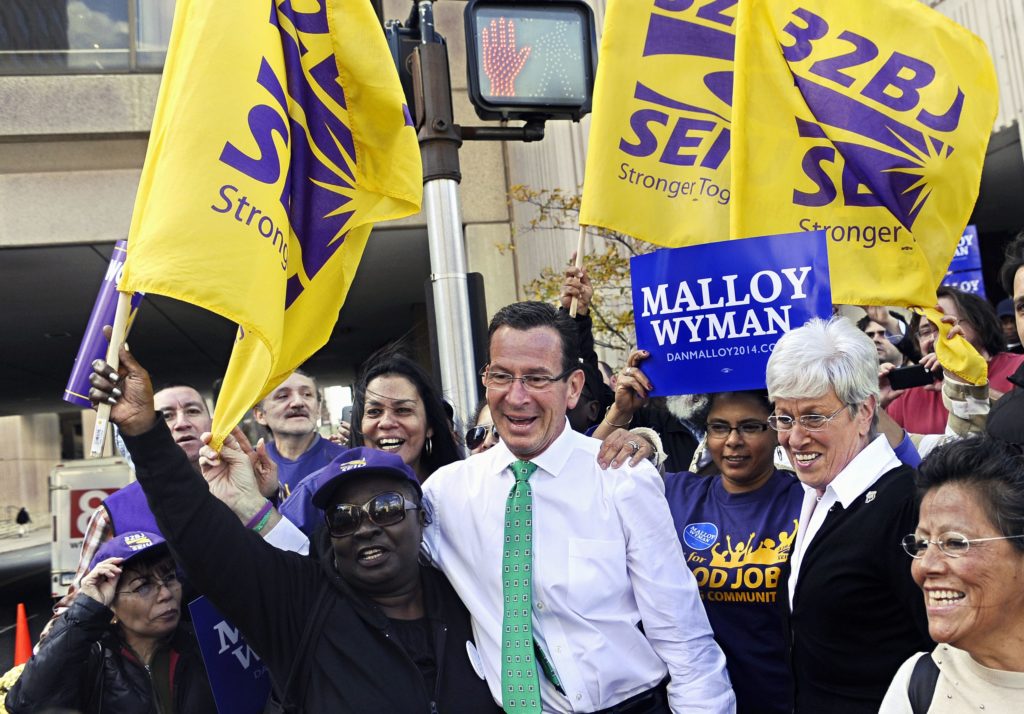
Former Gov. Dannel Malloy at an SEIU rally.
Unlike independent expenditures, campaign donations are limited by the state and for most lawmakers the single largest campaign financer is the state itself through the Citizens Election Program.
However, those unions also finance Morin’s PAC – known as the Pro-Progressive Energetic Leadership PAC (ProPEL). Donors include Morin’s own union, the Connecticut Education Association, various lobbyists and the head of the Working Families Party, Lindsey Farrell.
Morin faced a state investigation in 2014 over donations made from his PAC to the Wethersfield Democratic town committee.
Morin maintains a 96 percent rating by CT AFL-CIO for his votes on some of their key issues, including the 2017 SEBAC agreement, captive audience legislation and the $15 minimum wage.
He currently serves on the Finance, Revenue and Bonding Committee, Transportation Committee, Public Safety and Security Committee and the Joint Committee on Legislative Management.
Rep. Joseph Serra, D-Middletown, is a former AFSCME officer. He also served as president of the Middletown Managers and Professionals Association, although the MMPA was unaffiliated with any larger union at the time.
Serra was first elected representative in 1992 and has been in the legislature ever since. He currently maintains a 91 percent rating from the CT AFL-CIO.
While current or former union employees and officials serve on numerous committees, nowhere are they more concentrated than on the Labor and Public Employees Committee.
Four state representatives and two senators who are current or former union employees or officials serve on the committee which oversees legislation affecting labor unions.
Rep. Robyn Porter, D-New Haven, serves as the co-chair of the Labor and Public Employees Committee, along with newly-elected Sen. Julie Kushner, D-Danbury, who is the former co-chair of the Connecticut Working Families Party and a former union organizer for the United Automobile, Aerospace and Agricultural Implement Workers of America (UAW).
Until 2017, Porter worked as an administrative assistant for the Communications Workers of America and, according to unionfacts.com, earned a total compensation package of $53,518 in 2015.
Porter, elected to the House in 2014, has become one of the leading voices of the growing Progressive Caucus among House Democrats which, invigorated by the 2018 electoral sweep, has become a powerful force in the Connecticut House, claiming 44 members.

Rep. Robyn Porter, D-New Haven.
Porter was the leading voice in the successful push to increase Connecticut’s minimum wage to $15 per hour in 2019. It was part of the national push by unions and other progressive organizations, known Fight for $15.
In her final speech on the House floor before the final vote was cast for the $15 minimum wage, Porter thanked her “union brothers and sisters” for their efforts in the multi-year legislative push.
Porter also advocated for a paid family and medical leave program, another issue which has continually come before and passed out of the Labor and Public Employees Committee. She serves on the Appropriations Committee and Judiciary Committee and maintains a 91 percent rating from CT AFL-CIO.
Rep. Edwin Vargas, D-Hartford, also serving on the Labor and Public Employees Committee, is a former teacher, former president of the Greater Hartford Labor Council AFL-CIO, former president of the Hartford Federation of Teachers and former vice-president of the American Federation of Teachers Connecticut, a union representing state employees, including employees at UConn Health and, more recently, the assistant attorneys general.
Vargas’ tenure as vice-president of AFT CT earned him little more than a stipend of $3,200 in 2003, according to the union’s LM2 filings. Vargas’ past union work also included Acting Chair of AFT’s Human and Civil Rights Committee and he has been recognized and received an award from the Connecticut Communist Party for his work.
Vargas has a compatriot on the Labor and Public Employees Committee from his days as vice president of AFT CT: Rep. Michael Winkler, D-Vernon. Winkler also served as vice-president of AFT until 2007.
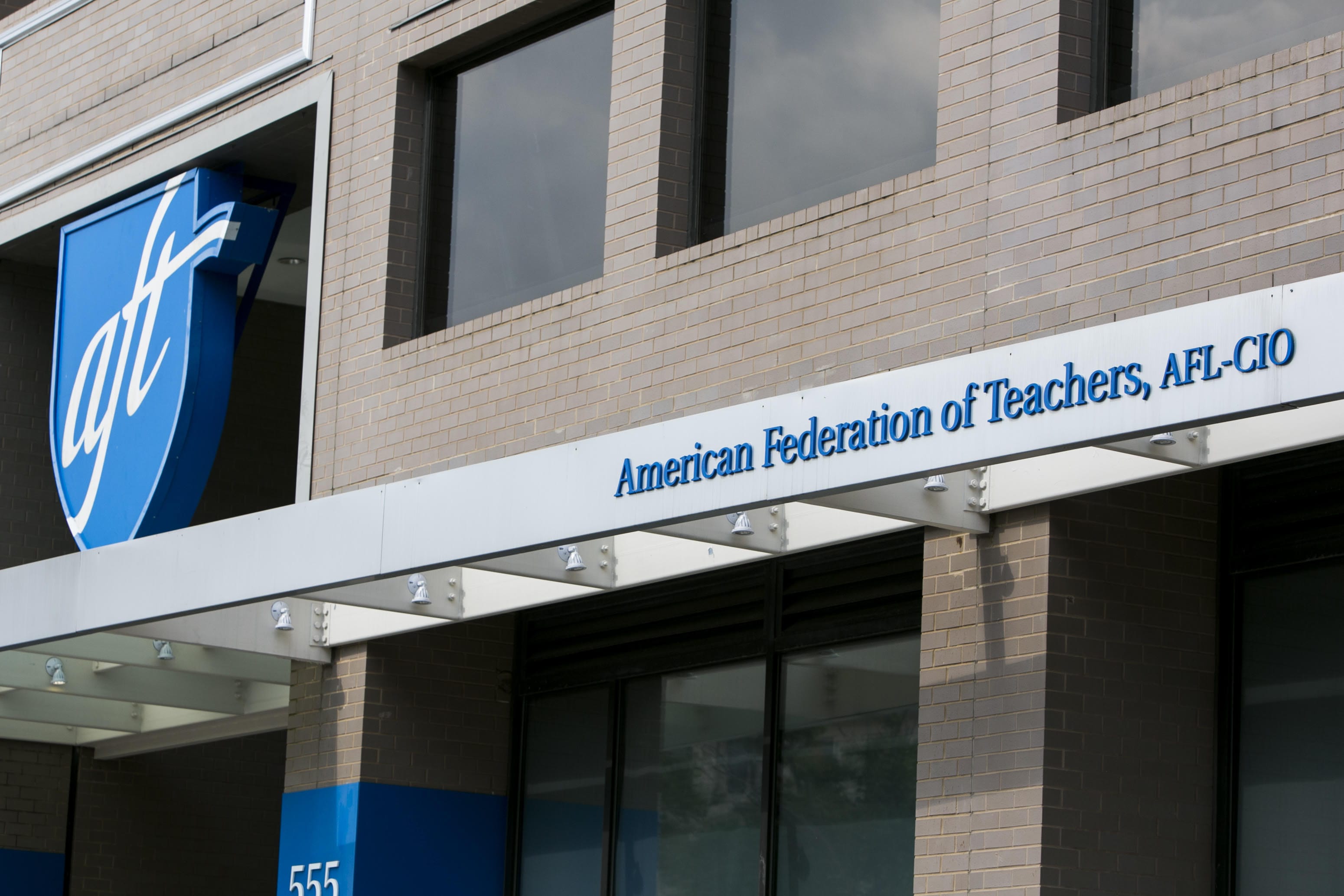
American Federation of Teachers Headquarters.
Winkler was vice president and then president of the Administrative and Residual bargaining unit for Connecticut state employees, an affiliate of both AFT and the AFL-CIO with approximately 3,000 members and part of Connecticut’s State Employee Bargaining Agent Coalition (SEBAC) – a coalition of state employee bargaining units that negotiate as a group.
A former Connecticut state employee for the Department of Social Services, Winkler receives a state pension of $66,238 as of 2018. He also served on the town council for the Town of Vernon.
Also originating out of AFT in Hartford, relative new-comer Rep. Joshua Hall, D-Hartford, is also a member of the Labor and Public Employees Committee. Hall ran on the Working Families Party ticket in Hartford, winning a 2017 special election in Hartford against a Democrat. He then won his 2018 general election running as a Democrat.
Working Families Action – the political action committee for the Working Families Party – spent $21,196 in independent expenditures to elect Joshua Hall in 2017, according to filings with the State Elections and Enforcement Commission.
Hall is vice-president of the Hartford Federation of Teachers. Although Hall was a teacher at Hartford’s Weaver High School, he left teaching in 2008 to work full-time for the union.
However, according to a Freedom of Information request made by Yankee Institute in 2017, Hall continued to be paid his teacher’s salary and benefits while working full-time for the union. Under a provision in the Hartford teachers’ union contract, the union reimburses the city 70 percent of Hall’s pay and his employment with the union continues to count toward his teacher retirement benefits.
It wasn’t the first time the Working Families Party ran their own candidate against a Democrat. Working Families Party lodged their first-ever candidate win in Bridgeport for a special Senate race when they ran former state Senator Edwin Gomes against Democrat Dennis Bradley in 2015.
Gomes won the seat and won reelection in the 2016 general election. He went on to co-chair the Labor and Public Employees Committee before retiring in 2018. Action for Working Families PAC received $80,000 from SEIU and spent $20,000 in independent expenditures for Gomes’ 2016 race.
But AFT and AFSCME – both affiliates of the conglomerate AFL-CIO – are not the only unions with sympathetic ears in the legislature.
Rep. Peter Tercyak, D-New Britain, was a registered nurse with Connecticut’s Department of Mental Health and Addiction Services. He was also a former executive board member for the New England Health Care Workers 1199 SEIU and former board member for the Connecticut Citizens Action Group, an organization with deep ties to labor.
A Connecticut state pensioner, Tercyak was among 21 people arrested in 2010 during a protest in support of striking health care workers, along with the current executive director of CCAG, Tom Swan. Tercyak was formerly a member of the Labor and Public Employees Committee, but this now serves on the Appropriations Committee, Public Health and the Energy and Technology Committee.
Tercyak is not the only CCAG alum to have a seat in the House. Newly-elected representative Phil Young, D-Stratford, won a 2018 special election for a Republican seat left vacant by Laura Hoydick when she took the helm as mayor of Stratford. Young held the seat by a 13-vote margin in the 2018 general election.
Young is a former executive director of CCAG. Young’s 2018 general election victory was contested by his opponent, James Feenan.
The case was heard by a four-person bipartisan committee in the House to decide whether or not the extremely slim margin warranted a new election. One of the committee members was Rep. Greg Haddad, D-Storrs.
Haddad worked for CCAG for ten years after graduating college, then moved on to work as a legislative aide in the General Assembly, eventually working his way up to Assistant Chief of Staff for Senate President Pro-Tempore Donald Williams, before running for state representative and winning in 2010.
Williams announced he would not seek re-election in 2014, leading to the ascent of Martin Looney, D-New Haven, to the top position in Connecticut’s Senate.
Williams went on to become president of the Connecticut Education Association, the state’s largest teachers’ union that maintains its headquarters across the street from the Capitol building.
The bipartisan committee split down party lines on whether there should be a second election for Young. He now serves on the Environment Committee, the Joint Committee on Judiciary and the Public Health Committee where he is co-chair.
Haddad serves on the Appropriations Committee and is the chairman for the Appropriations Sub-Committee on Higher Education, chairman for the Higher Education and Advancement Committee and is a member of the Government Elections and Administration Committee.
THE SENATE
A look at union political spending in 2018 shows that union leaders knew they had to put money into Connecticut’s senate races. The Senate was evenly divided between Republicans and Democrats from 2016 – 2018.
Union political spending overall in the legislature will be covered in the second part of this series, but the 36-member Senate now has four current or former union employees and officials: Sen. Catherine Osten, D-Sprague, Sen. Gary Winfield, D-New Haven, Sen. Kevin Witkos, R-Canton, and newly-elected Sen. Julie Kushner, D-Danbury.
Osten was elected to the Senate in 2012 and has become a powerful voice in Connecticut politics. She serves as co-chair of the Appropriations Committee and vice-chair of the Labor and Public Employees Committee. She also serves on Transportation, Legislative Management and the Regulation Review Committee.
Osten worked in Connecticut’s Department of Correction as an officer and then lieutenant. During her time in the prison system, she successfully unionized DOC supervisors and became president of the Correction Supervisors Council, part of the Connecticut State Employees Association SEIU.
Osten went on to become First Selectwoman of the small town of Sprague in 2007 and then to the Senate in 2012.
She receives a pension from the state and has been endorsed by nearly every Connecticut union over the course of her career. She is currently Deputy President Pro-Tempore for the Connecticut Senate.
Sen. Gary Winfield, D-New Haven, is Chief Deputy Majority Leader for Senate Democrats and is employed by the Connecticut State University chapter of the American Association of University Professors (CSU-AAUP), which represents approximately 3,200 employees in Connecticut’s state university system.
Winfield started his political career when he was elected to the House of Representatives in 2008 representing New Haven and Hamden, the district now represented by Rep. Robyn Porter.
Winfield is a CSU-AAUP associate for member services at Southern Connecticut State University.
Connecticut’s contract with CSU-AAUP has come under fire from media organizations recent years because of a provision in the contract that exempts university professors’ personnel records from public disclosure.
In 2018, a Central Connecticut State University professor was accused by multiple women of sexual harassment. Media organizations attempted to gain access to the professor’s personnel records but were denied. In Connecticut, union contracts supersede state law. This was not the first time a university professor accused of bad behavior had been protected by this contract provision.
Nevertheless, CSU-AAUP’s new contract with the same language was ratified in the House and in the Senate with a tie-breaking vote cast by Lt. Gov. Nancy Wyman, as part of Gov. Malloy’s 2017 SEBAC Concessions Agreement.

Sen. Gary Winfield, D-New Haven (right), speaks with Senate Republican Leader Len Fasano, R-North Haven.
Winfield has been pushing to gain the Majority Leader title in the Senate from fellow Democrat Bob Duff, D-Norwalk, saying the party needs to be more progressive. Winfield also backed Eva Bermudez Zimmerman – a union organizer for SEIU — as the 2018 Lt. Governor nominee, after ending his bid for the nomination.
Bermudez lost the nomination to Susan Bysiewicz, a long-time political figure in Connecticut.
Winfield is chairman of the Judiciary Committee which recently passed Senate Bill 440, also known as “captive audience” legislation, which would limit employers’ ability to meet with employees regarding unionization efforts.
Both Sen. Winfield and Rep. Porter voted in favor of passage, along with every other Democrat on the Judiciary Committee. A similar bill passed out of the Labor and Public Employees Committee with a vote down party lines.
Winfield also serves on the Appropriations Committee, Education Committee and Public Safety and Security Committee.
The odd-person-out in the Senate mix of former union employees and officials is Sen. Kevin Witkos, R-Canton, a former Canton police officer and former president of his police union local.
Witkos is the Senate Minority Leader Pro-Tempore, making him the second-ranked Republican in the Senate behind Sen. Len Fasano, R-North Haven.
Although a former union president, Witkos has largely pushed back against the unions’ political agenda. Although many of the other unions have shied away from backing his challengers, the American Association of University Professors did endorse his 2012 and 2018 rival, Melissa Osborne.
He received a score of 32 percent by CT AFL-CIO for his 2017 voting record, leaving little doubt that there is not much love for Witkos among the labor unions, despite his background.
Osten, Winfield and Witkos are long-time incumbents, but Connecticut’s public-sector unions put a large amount of money behind getting former union organizer and co-chair of the Connecticut Working Families Party, Julie Kushner, into the Senate in 2018.
Kushner was a regional director for the United Automobile, Aerospace & Agricultural Implement Workers of America International (UAW), which is an affiliate of AFL-CIO.
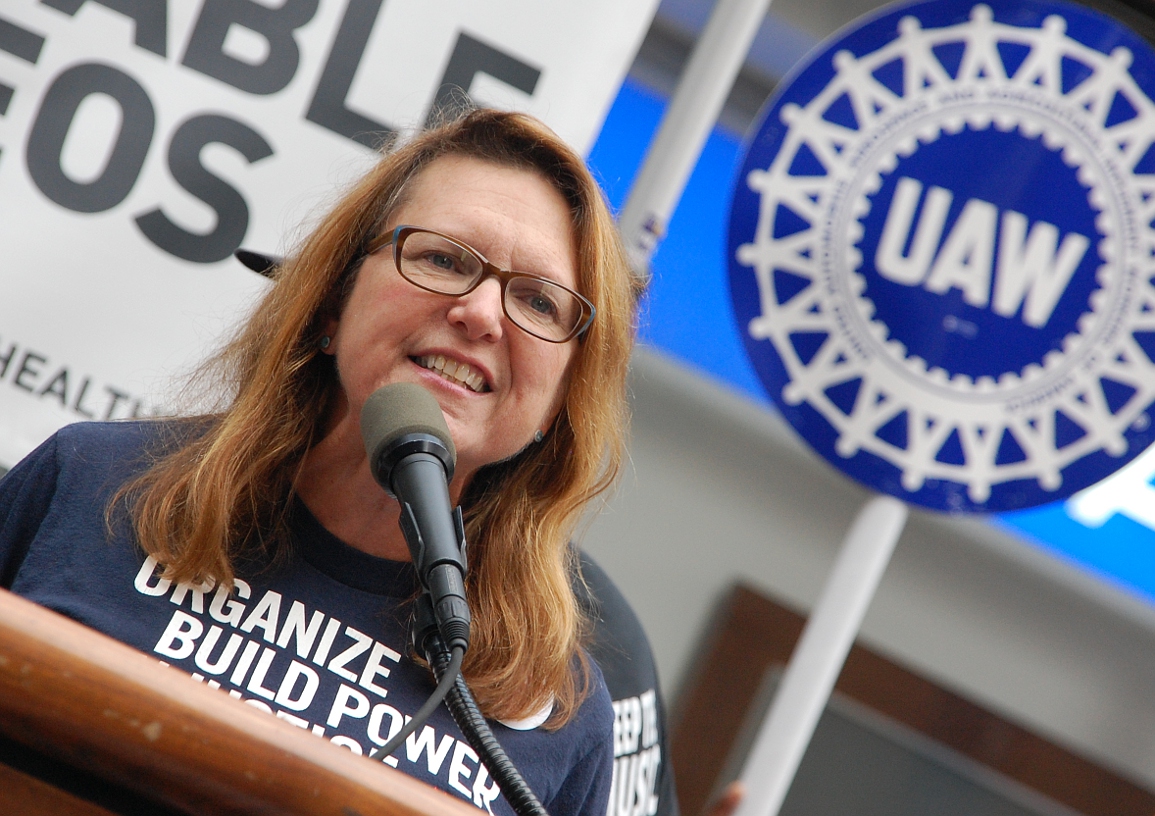
Sen. Kushner, D-Danbury, worked as a Regional Director for United Autoworkers (UAW) prior to running for public office in Connecticut.
The CT AFL-CIO counts AFSCME Council 4 and AFT CT among its affiliates, making it the single largest public sector union voice at the Capitol. According to UnionFacts.com, Kushner received $147,261 in total compensation as regional director for UAW in 2015.
Kushner beat out incumbent Republican State Senator Michael McClachlan, after SEIU, AFSCME and the Working Families PAC spent $98,370.09 in independent expenditures to push Kushner into the Senate.
SEIU alone spent over $64,000 either promoting Kushner or combating McClachlan. Working Families Action spent $29,974.08, and AFSCME Council 4 made up the rest.
The 2018 vote was a critical one for Connecticut’s public-sector unions. The new governor, facing another multi-billion-dollar deficit, would likely have to seek some kind of concessions from SEBAC and a Republican victory in either the governor’s race or the legislature could have put the unions back on their heels.
In 2017, Republicans had proposed ending collective bargaining for retirement benefits after the expiration of the current SEBAC contract in 2027. Union attorney Dan Livingston threatened a lawsuit if the legislature went through with it.
Kushner quickly made her presence known among fellow Democrats who might not have received the memo about protecting state employee pensions from any reforms.
Self-funded Greenwich Democrat Alexandra Bergstein, who beat out long-time Republican incumbent L. Scott Frantz, had run on a platform of reforming Connecticut’s pension obligations in a district where Connecticut’s top earners saw two increases to their income taxes over the course of the Malloy administration.
Bergstein told CT Mirror in an interview that she was contacted by Kushner following an op-ed she wrote calling for a “shared-risk” plan for pensions. “I immediately apologized,” Bergstein told the Mirror. “Point taken.”
Kushner’s rebuttal to Bergstein signaled bad news for Gov. Lamont, whose budget proposal featured a modest reform to the way state pensioners’ cost of living adjustments are calculated. The governor estimated he could save $28 million per year on the change.
Union leadership, under the protection of Gov. Malloy’s 2017 SEBAC deal, had zero reason to capitulate and welcomed the governor’s budget with a flat-out, “No.” Lamont gave up without a fight.
Kushner is now co-chair of the Labor and Public Employees Committee along with Rep. Porter. She also serves as vice-chair of the Environment Committee and serves on the Appropriations, Education, Housing and Executive and Legislative Nominations Committees.
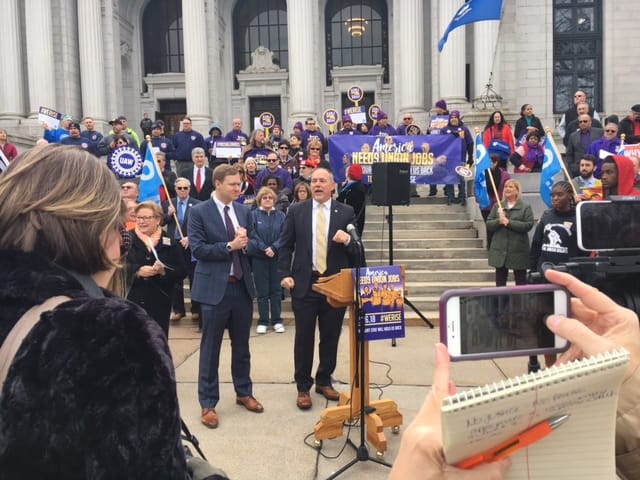
HOW UNION EMPLOYEES INFLUENCE GOVERNMENT
Outside of the state Supreme Court.
Despite Aresimowicz’s promise to never let a bill come to the floor that would alter Connecticut’s collective bargaining process, one major change was successful.
In 2017, a bipartisan budget ended the long-standing “deemed approved” provision for state labor contracts that enabled collective bargaining agreements to pass into law without a vote by the General Assembly.
Between 2002 and 2018, 124 contracts passed without a single vote in the House or Senate. Now, every contract gets a vote, or the contract is rejected.
Other collective bargaining issues have been debated in legislative committees and in the media but have never came up for a vote, oftentimes laid to rest in the Labor and Public Employees Committee.
Republicans have backed efforts to change the way Connecticut handles its collective bargaining agreements with its public sector unions, particularly when it comes to retirement benefits, pushing for overtime pay to be eliminated from pension calculations and setting retirement benefits in statute like most other states.
Connecticut’s unfunded pension liabilities and unfunded retirement medical benefits are one of the biggest obstacles to overcoming the state’s budget problems.
Part of the “fixed costs” making up 53 percent of the state budget, state employee retirement benefits are set through a collective bargaining process between the governor and SEBAC.
Past governors including Gov. Lowell Weicker and Gov. John Rowland cut deals with union leaders to underfund state employee pensions, which has led to the state’s current crisis and precipitated two rounds of tax increases in 2011 and 2015 under the Malloy administration.
These costs – and lost revenue from the 2008 recession – have led to several rounds of negotiations in which state employees have agreed to pay more for pensions and healthcare in exchange for no layoff pledges and deferred pay increases.
Union leaders continually call for increasing taxes on the wealthy in Connecticut to shore up budget gaps, rather than returning to the bargaining table, and this year is no different.
Despite Gov. Lamont’s insistence that Connecticut back away from increasing taxes again on its high-income residents, Democrats proposed a 2 percent surcharge on capital gains.
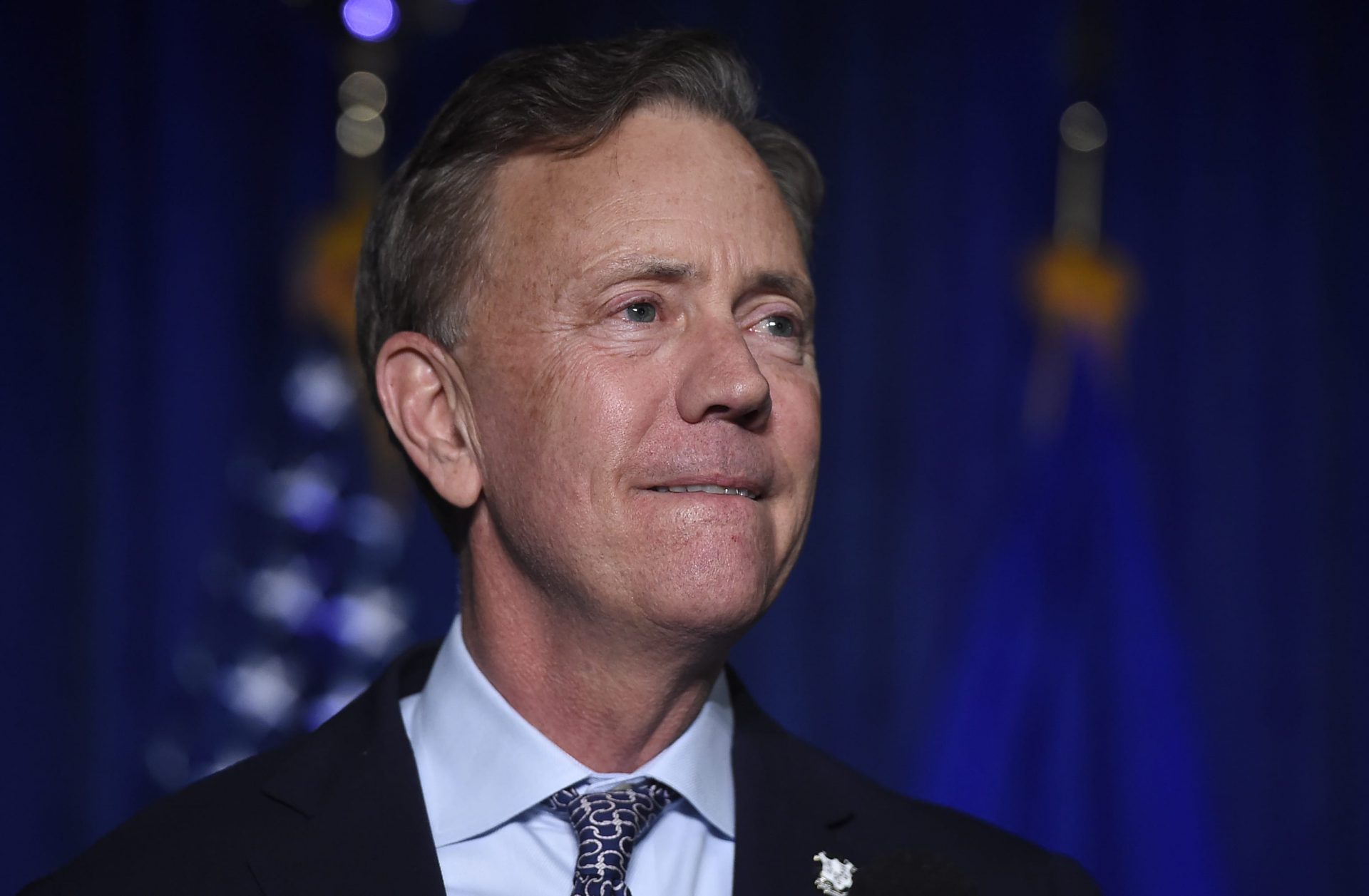
Gov. Ned Lamont.
Republican-backed efforts to alter retirement benefits or end the use of collective bargaining to set retirement benefits have not met with any success in the legislature. Indeed, these proposals rarely make it out of committee.
The Republicans had little hope. They were and remain the minority party in the House and only held a tie in the Senate for two years before Democrats swept both chambers in the 2018 election – an election that saw large amounts of union money and influence injected into the gubernatorial race and several Senate races.
In 2017, Malloy signed a new concessions agreement with SEBAC, which extended the contract until 2027.
Although the deal did create a new retirement plan for new employees, it essentially ended any chance to reform retirement benefits for most of the state workforce. Even newly-elected Gov. Ned Lamont had to give up his proposal to make a relatively benign change to the way Connecticut calculates cost of living adjustments for its retirees.
But issues backed by unions are a different matter. They are regularly passed out of committee.
In 2018, the political winds shifted in favor of the unions, and a number of union-backed initiatives are likely to come up for a vote in the General Assembly — including some big-ticket items high on Democrats’ agenda like a $15 minimum wage, captive audience legislation and the paid family medical leave program.
Captive audience legislation would limit employers’ ability to hold meetings with their employees regarding unionization efforts. It has been pointed out numerous times that the legislation is pre-empted by the National Labor Relations Act and that Connecticut would likely face a lawsuit if the bill is passed, but the captive audience bill is one of the top items on the unions’ political agenda, particularly with a new, sympathetic attorney general.
A separate bill to push back against the U.S. Supreme Court’s decision in the contentious Janus v. AFSCME case also passed out of the Labor and Public Employees Committee.
The Janus decision is costing Aresimowicz’s employer – and other public sector unions — big money by ending “agency fees” for employees who aren’t part of the union.

Rep. Edwin Vargas, D-Hartford.
The new legislation would essentially give unions more control and influence over state and municipal employees by giving union leaders access to employees’ personal information, giving dues authorizations outline in union membership cards the backing of state law and restricting what a court can award a plaintiff in damages against a union for violating its own membership terms.
The anti-Janus bill was passed in the House but never received a vote in the Senate. Neither chamber took up the captive audience legislation in 2019 as time became short on the legislative calendar.
Even when Connecticut had a Republican governor, labor was able to extract great deals and leverage great influence.
When Gov. Rowland laid off state employees in an effort to balance the state budget, SEBAC turned around and sued. That lawsuit was eventually settled by the Malloy administration and payments are still contributing to the state’s fiscal crisis.
However, Rowland also signed a 20-year SEBAC agreement in 1997, an agreement which continued underfunding the state employee pension system but didn’t allow for any reforms to the system without union leaders agreeing to negotiate.
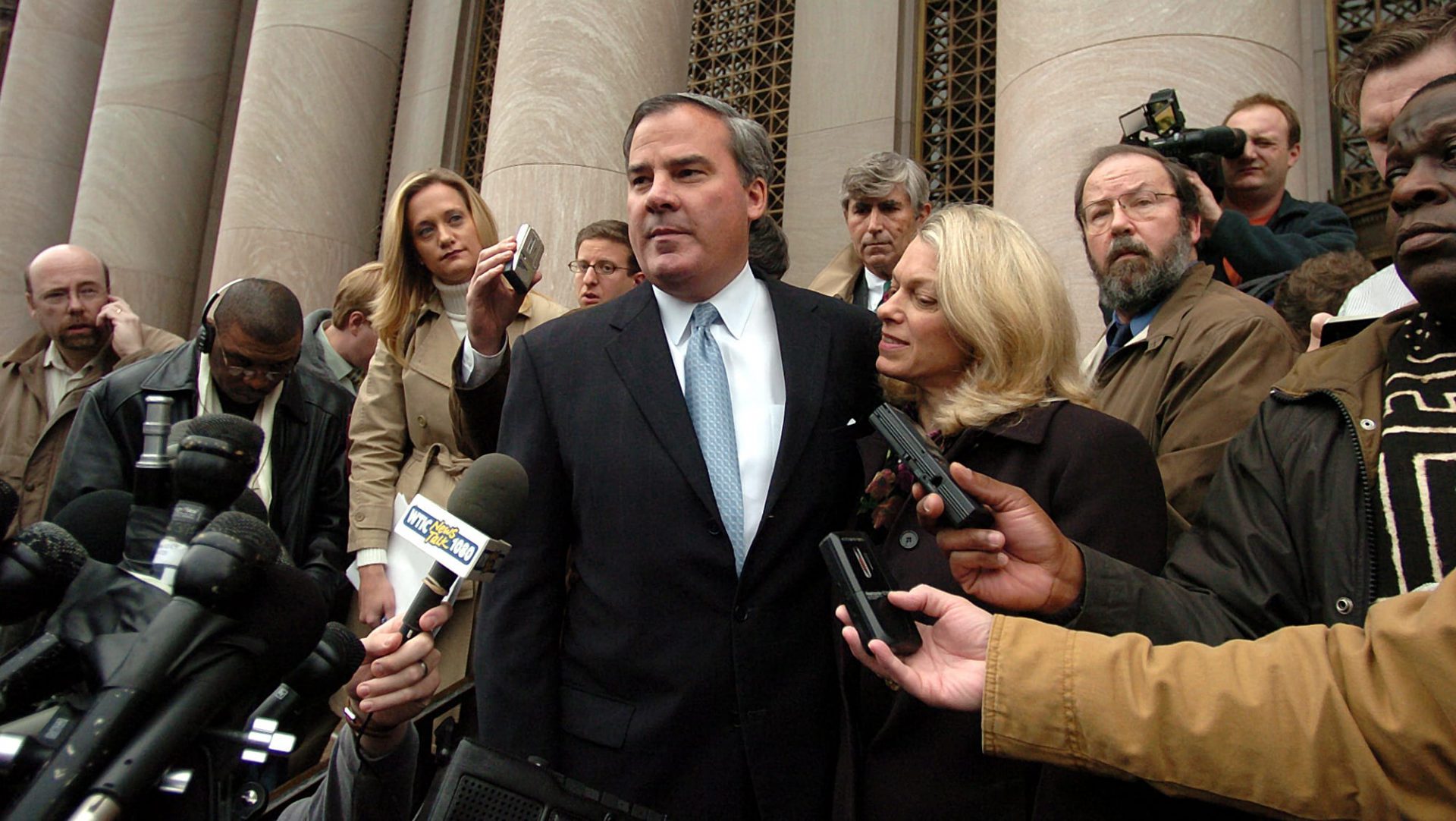
Former Gov. John Rowland.
That job fell to Gov. Malloy. Malloy twice negotiated with labor leaders for concessions, but it was not enough to bail Connecticut out of a continuing spiral of deficits.
Malloy also extended the SEBAC contract twice, making it a 30-year deal – something unheard of in labor contracts – and offering raises and layoff protections in the latest 2017 agreement at a time when the state faces another round of multi-billion-dollar deficits.
MORE TO COME
This is just part of the influence that unions, particularly public-sector unions, have on the legislature in Connecticut, and there are many more lawmakers who have been financially backed by unions’ political spending.
Although the number of current or former union employees, officials and representatives is small in comparison to the whole, they do retain a significant amount of power and influence over which legislation receives a committee hearing or is called to the floor.
Money fuels politics. That is unsurprising and, obviously, there is plenty of money flowing in from businesses and PACs on the other side of the political aisle.
This is not to say these lawmakers are inherently corrupt. Political views differ, and no organization is going to back a candidate or politician whose views are antithetical to their own.
But only one side has consistently won over the years in Connecticut. Labor unions have a built-in organizational and revenue structure that makes them formidable in finding candidates, turning out the vote, elevating those who will tip the scales in their favor, and having the financial means to do so.
And the influence generated by unions on Connecticut is not confined to the state: Connecticut’s major public-sector unions push ideas and policies that originate with the larger national and international unions.
Union money and influence essentially flows downhill from national headquarters into the state.
The Fight for $15, paid family and medical leave and the push for higher taxes on some segments of Connecticut’s population originate from broader, national initiatives set by union leaders from their offices in Washington D.C.
The unions then back social movements and political action committees throughout the United States in order to gain state-by-state victories, placing sympathetic lawmakers in office to carry out their agenda.
In the next installment we will examine how union money and influence flows into Connecticut from the national union affiliates, shaping the state’s political fights and ultimately contributing to Connecticut’s fiscal crisis.
Read Part 2 of this series, The union money machine: From D.C. to Connecticut.



